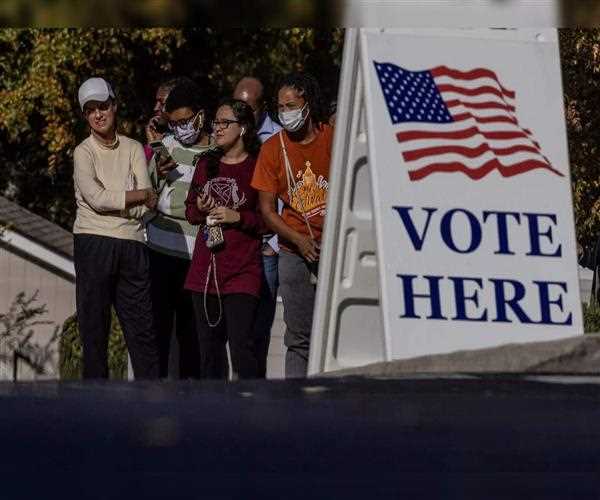Search here

29-Feb-2024 , Updated on 2/29/2024 9:20:20 PM
The Role of Technology In the United States Election
Technology is no longer a simple means to an end, it has now become a useful tool used in the United States election process to modernize and improve many aspects of it. While processing election administration to improve voter registration and voting experience, technology has retooled election management greatly from local to nation-wide. In this paper, we seek to describe the complex impact of technology on the US electoral system as seen through the lens of the upcoming election.
Geographic Information Systems (GIS)
Teamed with the use of Geographic Information Systems (GIS), election officials would become empowered to curb these inefficiencies and with enhanced efficiency in the electoral process. GIS technology helps to refine such things as demographic data, voter travel patterns, and geographic information so they can identify strategic places where polling stations, early voting sites, and vote centers can be placed. In other words, it gives campaign managers the power to pinpoint locations with massive turnout of voters and then allocate available resources to the areas with aim of increasing voter convenience and facilitation.
Additionally, GIS can also provide a mechanism to track voter movements in real-time as they travel to early voting locations and on Election Day. Through observing voters flow to vote and recording where voters are bones of mass shifts, election officials can hence make rational choices of polling station resources distribution, and de-congest polling locations. Furthermore, the GIS tools are capable of evaluating disproportions in voter participation based on various demographic groups and spatial areas, eventually generating more specific and tailored outreach and engagement approaches.
The Web has opened up a new spectrum for voter mobilization and dissemination marked with advanced tools such as informing the people about the election or any conduction related matters. Internet apps have become inseparable components of the election management like the websites, e-newsletters, social media platforms, podcasts, and online training sessions providing poll workers since then. With the help of these channels, the election administration bodies can just by one click reach huge number of the voters including the youth the members of which use digital media predominantly for information.
Therefore, Internet-based programs can allow the election officials to provide voters with such services: voter registration tools, search for polling locations, sample ballots, and termination dates. Besides that, social media has become the best outlet to engage with voters and provide a two-way communication method therefore the political leaders can respond immediately to any voter's query or concern through social media. In this way, elections officials will be much easier to notice, for example, by making voting accessible, transparent and also representative.
Technology in Voting:
Through innovations in technology, the methods of casting votes have experienced several components. Such includes the areas of early and absentee voting, as well as election day operations. Voter starting absentee ballot services makes it possible to track the status of voting mailings and communicate the current status to the voters; thus, enhancing transparency and confidence in the absentee voting process. Additionally, the progress of technology on UOCAVA (United States Code, Title 42, Chapter 15) has dramatically secured the transmission of materials for elections to uniformed and overseas citizens leaving them to have timely participation in the process.
With the introduction of electronic poll books, the paper based process to update the voter documents is replaced in many jurisdictions, and this has led to a simplified check-in procedure for voters on the Election Day and there is a reduction in the time voters have to spend waiting at the polling stations. What's more, innovations in ways of sorting ballots and matching signatures technologies make it faster and more accurate to process absentee ballots. Hence, the electronic system also adds the transparency and the legitimacy of the election process.
Voter Education and Engagement:
Besides the easy-to-follow administrative procedures, technology proves its imperative influence on voter education and engagement. The online voter education web platforms along with mobile applications are of great help to voters by providing them with all information ranging from candidates to ballots to election procedures. These platforms are the source of knowledge for voters and they can participate here and democratically as well.
Then, technology provides us with ways to conduct such voter registration campaigns, outreach processes and voter mobilization drives. Data-driven approaches combined with precise target messages from officials of election and political organizations may elevate voter registration and election participation among specific social groups. Besides, these online voter registration websites streamline the registration process, and as a direct result, this passivizes eligible voters and makes it even more comfortable for them to participate in elections.
Cybersecurity and Election Integrity:
As technology gets more entrenched into the election process cybersecurity is now a matter with serious implications for anyone concerned with electoral systems. Securing the election infrastructure, voter application forms and electronic voting devices against cyber threats is one of the fundamental tenets for maintaining the integrity and security of voting process. Election officials have to keep a robust cybersecurity apparatus with uttermost attention to encryption, multi-factor authentication, and periodic security testing of the system to avert cyber-attacks and unauthorized access to the electoral systems.
Conclusion
Indeed, it can be said that technology is a catalyst for the modernization and enrichment of the U.S. electronic process. From geographic Information Systems to internet-based applications, voter education platforms, and cybersecurity measure, digital technologies have made election administration, voter outreach and voting process all part of technology. With the process of the technology continues to refine, integrating it responsibly in the electoral process will still be an essential factor in assuring that the elections will be fair, accessible, and secure ones all over the county.

Content writer
I am a content writter !
Join Our Newsletter
Subscribe to our newsletter to receive emails about new views posts, releases and updates.
Copyright 2010 - 2025 MindStick Software Pvt. Ltd. All Rights Reserved Privacy Policy | Terms & Conditions | Cookie Policy